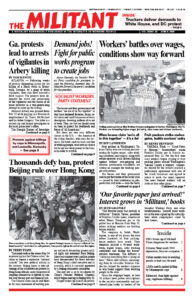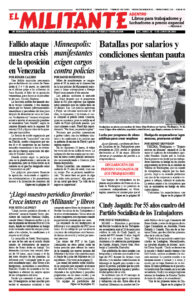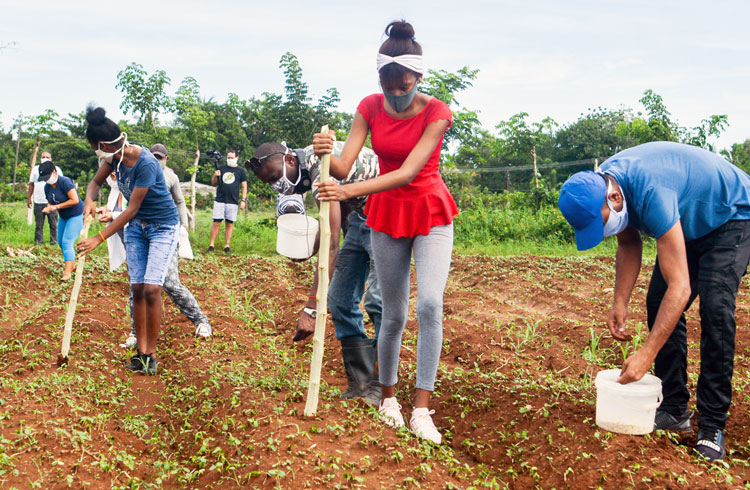Like it has done ever since the fight to overthrow the U.S.-backed dictatorship of Fulgencio Batista began, the revolutionary leadership in Cuba has turned to working people to lead the way again. They are doing so to confront the impact of the worldwide capitalist crisis and the U.S. rulers’ economic war against the revolution.
Workers, farmers, youth and their mass organizations are increasing food production, using workers creativity and control of production to find substitutes for critical imports that have been cut off. They are going door to door to make sure everyone gets the medical care they need, and making sure that no one is left on their own.
And despite Cuba’s own difficulties, over 2,000 volunteer health care workers are treating coronavirus patients in 23 countries, part of the revolution’s tradition of international solidarity.
According to Trabajadores, newsweekly of the Central Organization of Cuban Workers (CTC), more than 30,000 workers lost their jobs over the last year — before the pandemic — because of new U.S. sanctions that made it harder to get loans, spare parts or raw materials.
By May 11 that number had reached more than 138,000 — including in tourism, a key source of hard currency — because of the drop in international travel and trade.
In capitalist countries like the U.S., millions of workers have been thrown out of work and left to fend for themselves. In Cuba — where industry is part of the national patrimony run under workers control — laid-off workers get 60% up to 100% of their salary.
But the goal is “to minimize those who are inactive at home collecting their wage guarantee,” Trabajadores explained, by offering workers jobs in other fields. And it isn’t make-work, because workers need to know “they are doing useful work.”
“Work is the best protection” is the headline of a May 24 article in the paper. Hotel grounds are being planted with vegetables and fruit trees to lessen dependence on imports. Other workers are repairing 8,000 rooms that had been out of service to make them available when tourism returns.
Many of the 36,000 workers laid off in tourism now work at urban farms, at senior citizens homes and medical quarantine centers, or in construction.
“I will always be where the revolution needs me,” hotel cook Miguel Moreno said. Now he is preparing food for hospital workers and patients. “The best incentive is when they send me messages of congratulations for a tasty dish.”
In Guantánamo, more than 400 laid-off workers have joined 37 CTC agricultural brigades working side by side with vegetable farmers across the province. Others have joined Cuba’s “innovators” movement, which keeps machinery running despite difficulty in getting spare parts.
The Union of Young Communists has initiated more than 305 youth contingents, mostly in agriculture. Diosvany Acosta Abrahante and Aylín Álvarez García, the UJC’s first and second secretaries, joined them at the La Batalla farm in Havana May 22. They cleared fields, spread fertilizer and planted corn, cucumber and beets.
“This is nothing extraordinary,” Acosta said. “It’s the duty of an organization that has always been at the side of the revolution in good times and difficult ones.”


